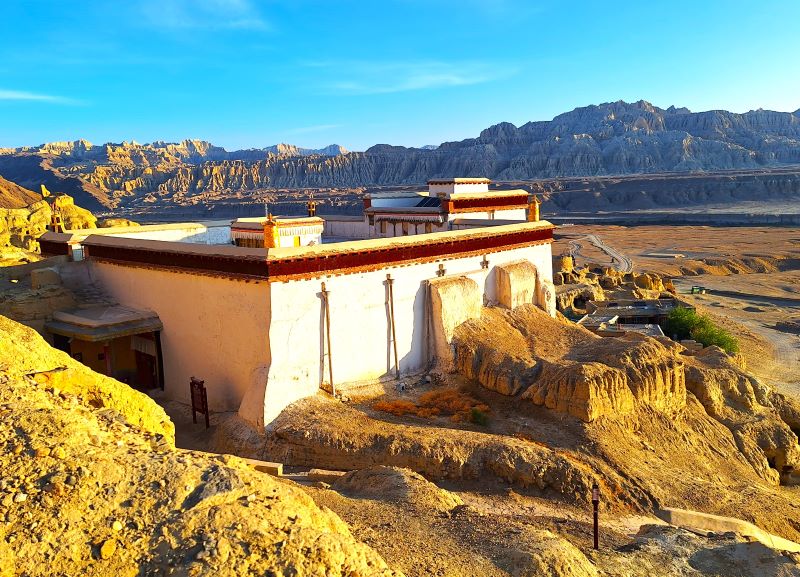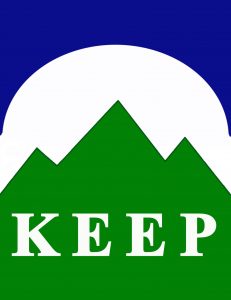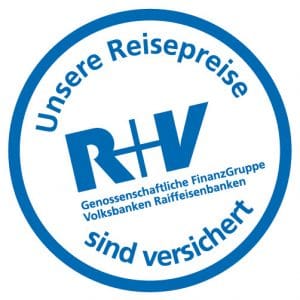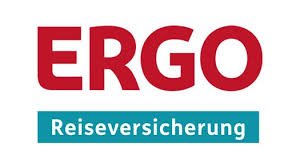Highlights of Tibet – cultural trip to the roof of the world
- Description
- Gallery
- Trip itenerary
- Trip dates, prices and services
- Important travel information
- Request Book
On this exclusive cultural journey, let yourself be captivated by the fascinating religious atmosphere, unique culture, and breathtaking landscapes of Tibet. From Lhasa to the remote western region of Ngari, the former Guge Kingdom, unforgettable impressions await you.
During your excursion, you will visit significant places such as the Norbulingka Monastery, the majestic Potala Palace, the venerable Jokhang Temple, and the lively Barkhor Street. The journey continues westward to impressive destinations like the Everest Base Camp and the world’s highest monastery, the Rongbuk Monastery. En route to Manasarovar Lake and the sacred Mount Kailash, rising on the wind-swept Tibetan plateau, you will discover monastery complexes perched on cliffs, encounter resilient and hospitable Tibetans, see herds of yaks, and marvel at the majestic peaks of the Himalayas, as well as shimmering turquoise lakes. Another highlight of your journey is the mysterious, lost Guge Kingdom, a once-powerful civilization that flourished in Western Tibet from the 10th to the 17th century. Even in ruins, it still bears witness to its greatness, with towering temples, palaces, and fortresses providing insight into the region’s rich historical and cultural heritage. Your unforgettable journey concludes with a return drive to Lhasa, where you can reflect on the beauty and spirituality of Tibet once more.
This journey will undoubtedly be a voyage of discovery for a lifetime, leaving you with lasting memories.
Day 1: Arrival in Lhasa (3,656 m) – Briefing and Welcome Dinner
Upon arrival at the airport, you will be greeted by our local Tibetan guide and driver and transferred to the hotel. The drive from the airport to downtown Lhasa takes about 1½ hours. Take some time to rest at the hotel upon arrival to acclimatize to the altitude (3600m). It is helpful to take it easy during the first few days and make sure to drink plenty of fluids. From now on, keep a bottle of mineral water handy and wear a sun hat when going outside. In the evening, a traditional welcome dinner awaits you. Overnight at the hotel, (D).
Day 2: Sightseeing in Lhasa (3,656 m) – Drepung Monastery, Sera Monastery – Visit to Barkhor Street – Evening Walk on Barkhor Street
The first attraction of the day is a visit to the Drepung Monastery, the largest and most influential Tibetan monastery where over 10,000 monks once resided. The Dalai Lama was once a resident there. After lunch, you will visit another famous monastery, the Sera Monastery, founded in 1419 by Tsongkhapa’s disciple Jamchen Choeje. A particularly impressive experience is witnessing the lively and gesture-filled Buddhist scripture debates conducted by monks and novices. You can attend the debates from Monday to Saturday between 3:00 pm and 5:00 pm. In the old town of Lhasa, Barkhor Street, known as the “heart of Lhasa,” is home to the most famous pilgrimage route and bustling bazaar in Lhasa. Originally, Barkhor Street was the only way to circumambulate the Jokhang Temple and was referred to by local Tibetans as the “Holy Street.” Over time, it has gradually expanded to the large, historic quarters surrounding the Jokhang Temple. With a total length of about 1000 meters, this circular street has 35 side streets and alleys, preserving the traditional appearance and lifestyle of the ancient city of Lhasa. Here, we embark on a journey through time and catch glimpses of life centuries or even a millennium ago. In the evening, you should definitely revisit the street, which is not far from your hotel. Especially in the glow of the lights, a very mystical atmosphere is created. Overnight at the hotel, (B).
Day 3: In Lhasa (3,656 m) – Potala Palace, Jokhang Temple, Tibet Museum
In the morning, your guide will pick you up from the hotel and accompany you to the famous Potala Palace, the symbol of Tibet and a masterpiece of Tibetan architecture. The palace was first built in the 7th century by the 33rd King Songtsen Gangpo and later rebuilt by the 5th Dalai Lama in the 17th century. Today the Potala is a museum and world heritage site. Please note that photography is not permitted inside the Potala Palace. We recommend having your passport ready at the entrance. In the afternoon we visit the Jokhang Temple in the historical center of Lhasa city. Jokhang Temple is one of the holiest temples in all of Tibet and has always been full of local pilgrims. Afterwards we visit the Tibet Museum. It features “countless historical and cultural relics, Buddhist figures, ancient Tibetan books and records, and folk crafts. Overnight stay in the hotel, (B).
Day 4: Lhasa – Yamdrok Tso – Gyantse (3,977m) 270 km / 6 hours drive
Today we continue to Gyantse, which is 290 km from Lhasa. The road skirts Lake Yamdrok, a vast, blue-reflecting body of water 4,300 meters above sea level, and then climbs to the 5,010-meter-high Karo La (pass), a spectacular step between the glaciers. On the way we visit the Samding Monastery, which rises into the water about 90 meters above Lake Yamdrok at the end of a narrow peninsula. Samding Gompa was destroyed after 1959 but is currently being restored. Samding is the seat of Dorje Pakmo, the consort of the wrathful deity Heruka, the highest female incarnation in Tibet and the third highest person in the Lamaist hierarchy after the Dalai Lama and the Panchen Lama. After almost three hours we reach the Kamba Pass (4,700 m). From here we enjoy a beautiful view of the sacred lake Yamdrok Tso and its perfect turquoise color. We continue along the lake and after an hour we reach the town of Nangartse (4,300 m), where we take a break for lunch. In the afternoon the path takes us further up to Korala, which is 5,045 meters above sea level. From up here we can marvel at the spectacular Nojin Kangsang Glacier (7,206 meters). Before we reach Gyantse, we see another reservoir with turquoise water, embedded in a beautiful landscape in a fascinating valley. After about an hour we reach Gyantse, with an old city wall dominated by a fortress from 1390. The original fortress is believed to have been built by Pelkhortsen, son of the anti-Buddhist king Langdarma, who ruled between 838 and 841. The walls were built in 1268 after the rise of the Sakyapa sect. Gyantse is known as the “City of Heroes” because the city put up strong resistance against the overwhelming strength of the British Tibet expedition led by Francis Younghusband in 1903-1904. Another highlight of the city is the Chöde Monastery with its huge “Kumbum”, a four-story, walk-in chorten with 108 chapels and countless murals. Overnight stay in the hotel, (B).
Day 5: Gyantse via Shigatse to Sakya (4,200m), Shalu and Tashilunpo monasteries – 240km / 5 hours
Today we first drive to Shigatse, the agricultural center of Tibet. On the way we stop at Shalu Monastery, which houses the oldest surviving wall paintings in Tibet. Arriving in Shigatse, we visit the Tashilumpo Monastery – the seat of the Panchen Lama, who is considered the reincarnation of the Buddha of endless enlightenment. Built in 1447 by the first Dalai Lama, this monastery houses interesting items such as the relics of Shakyamuni, the Hall of Maitreya and an outstanding collection of gifts and statues. We continue to Sakya and visit the Sakya Monastery, another very important Tibetan Buddhist monastery. It is the parent and main monastery of the Sakya school of the same name and was the political center of Tibet in the second half of the 13th century and the first half of the 14th century. Overnight stay in the hotel, (B).
Day 6: Sakya – Xegar to Everest Base Camp (5,000 m) – 220km / approx. 5 hours
After breakfast we set off for Xegar. The town with 3,000 inhabitants is the center of this remote region of Tibet and serves as a starting point for expeditions to Mount Everest and other peaks. As the journey continues we reach Tingri. When the weather is good, we can already see Mount Everest (8,849 m) on the horizon. The journey takes us over the Gyatso La Pass (5,248 m) and the Pang La Pass (5,120 m) to the new Mount Everest Base Camp (5,000 m). Here you have an excellent view of the gigantic north face of Everest. Overnight stay in a simple hotel, (B).
Day 7: Everest Base Camp, Rongbuk Monastery – Drive via Pelkhu Lake to Saga (4,840 m) – 347 km / 6 to 7 hours drive
We get up at sunrise to admire the giant in the morning light. After breakfast we visit the Rongbuk Monastery and continue on the Friendship Highway to the deep blue Pelkhu Tso (lake). On a short hike around the lake we enjoy the fresh wind and the magic of the landscape. Continuing along the main Himalayan range, we pass some typical Tibetan villages and reach Saga (4,600 m). With a little luck we will have a view of the peaks of Shishapangma (8,046 m), Langtang (7,227 m) and Gaurishanker (7,134 m). Overnight stay in the hotel, (B).
Day 8: Drive to Manasarovar Lake (4,590 m) – Mt. Kailash Viewpoint – Darchen, 540 km / approx. 8 hours drive
Today we have a longer journey of more than 500 km ahead of us. As you drive, keep an eye out for wild donkeys, blue sheep and black-necked cranes that can be seen along the way. We start towards Paryang, which is almost 450 km from Saga. From Paryang we make our way across a plain to Lake Manasarovar, just 30 km south of Mount Kailash. As we approach this beautifully situated sacred lake, the historic Chiu Monastery becomes visible on the northwest shore of the lake. From this wonderful vantage point, with a bit of luck, we can catch our first magnificent view of the majestic Mount Kailash. Optionally we can drive around Manasarovar Lake or alternatively visit Demon Lake. We drive to Darchen (4,575 m) for an overnight stay and dinner. Overnight stay in the hotel, (B).
Day 9: Drive Darchen (4,575 m) to Zanda – Kingdom of Guge (3,800m) – Tirthapuri Monastery, hot springs – Tholing Monastery, 290 km / 7 hours drive
We drive towards Tirthapuri and leave the unique landscape of Mt. Kailash behind us. We drive along the Sutlej Gorge and through the Garuda Valley to Guge. The extraordinary landscape of Zanda will captivate and enchant us from afar. On the way there, with a bit of luck in the weather, we have a unique view over the gorge and all the way to the Indian Himalayas on the horizon with the holy mountain Nanda Devi (7,816 m), the highest mountain in India. We make a short stop in Thirthapuri. After Mount Kailash and Lake Manasarovar, Tirthapuri is considered the third most important Buddhist pilgrimage site in western Tibet. Tirthapuri (also called Zhadaburi, 4,310 m) lies northwest of Mount Kailash and on the north bank of the Sutlej River and is famous for its sacred hot springs and the Guru Rinpoche Monastery (Tirthapuri Monastery). In the small village of Zanda (3,800 m) is the Tholing Monastery, one of the few remaining buildings of the former Guge Kingdom. The monastery was founded in 996. The monastery was the religious center of the Guge Empire. The wall paintings in Tsaparang and Tholing from the 11th to 15th centuries Century are considered a masterpiece and are among the most delicate and beautifully preserved examples of Buddhist icon painting. The medieval-looking city, with its special architecture, is one of Tibet’s great cultural relics and shines golden in the fading evening light. An unforgettable sight that warms our hearts. Overnight stay in a simple hotel, (B).
Day 10: Guge Kingdom – Tsaparang Fortress, Donggar Ruins Cave Complex
Before breakfast we drive to the bus station to be at the fairytale ruins of Guge for sunrise around 8:00 a.m. The entire day today is dedicated to visiting the ruins of Guge’s ancient fortress-like capital, Tsaparang. Within its walls and later in the Tholing Monastery we find remains of the ancient Guge civilization, which determined the fate of this remote region from the 11th to the 17th centuries. The work was carried out by artists from neighboring Ladakh. You will then visit the Donggar Ruins, the largest known cave monastery complex in Tibet with over 200 caves. Overnight stay in a simple hotel, (F).
Day 11: Drive from Tsaprang to Saga – 560 km and approximately 10 hours drive
In the morning we enjoy a hearty breakfast before setting off on the long journey back to Saga. The scenic drive covers 560/580 km and will take approximately 10 hours to complete. On the way we have the opportunity to admire the impressive landscape of Tibet. After our arrival in Saga, we move into our hotel and end the rest of the day comfortably. Overnight stay at the hotel in Saga, (B).
Day 12: Saga to Shigatse (3,900 m) – 480 km and approximately 6 hours drive
Today we leave early to drive from Saga to Shigatse. The journey covers 480 km and takes approximately 6 hours. On the way back to Shigatse via Xegar we have the opportunity to enjoy the vastness and solitude of the Tibetan highlands one last time. We review the highlights of our unforgettable trip. After our arrival in Shigatse, we move into our hotel and have time to recover. Overnight stay at hotel, (B).
Day 13: Drive from Shigatse to Lhasa – afternoon free time – 270km and approx. 4 hrs drive
Our journey is slowly coming to an end as we drive the last stretch of the “Friendship Highway” to Lhasa. After arrival, you have the rest of the day free to explore the city, do some shopping or simply relax in the hotel garden. Overnight stay at the hotel in Lhasa, (B)
Day 14: Free time until departure – farewell to Tibet
Today is free for you until your departure. Use the time for final explorations, sightseeing or to relax. We then transfer to the airport, where we say goodbye to Tibet, (B).
We reserve the right to make program changes due to special events, force majeure or weather reasons.
B = Breakfast | L = Lunch | D = Dinner
This tour can also be booked for individual travelers at an additional cost or for your individual group at dates other than shown here.
German guided tour
English guided tour
29. May 2025
2.990 €
Request non-bindingBook bindingly
16. June 2025
2.990 €
Request non-bindingBook bindingly
26. June 2025
2.990 €
Request non-bindingBook bindingly
03. September 2025
2.990 €
Request non-bindingBook bindingly
18. September 2025
2.990 €
Request non-bindingBook bindingly
25. September 2025
2.990 €
Request non-bindingBook bindingly
16. October 2025
2.990 €
Request non-bindingBook bindingly
Duration: 14 days
Costs: € 2.990 per person
Group size: min. 4 Persons (all the tour dates are guaranteed with a minimum group size of only four persons)
€ 460 for single room supplement (only for hotel accommodation, for lodge overnight stays during the trek, single accommodation is not available).
What’s included:
- Accommodation and meals as per itinerary
- Drinking water
- English speaking Tibetan tour guide
- Airport transfers within Tibet
- All necessary land transfers by private vehicle/bus
- Flight Ali to Lhasa, icl. 27kg luggage (appr. 500 US$)
- Sightseeing with entrance fees, driver and vehicle
- Permission, National Park Access/Conservation Fees, Employee Insurance
- Tibet, TTB and Everest Permits
- Oxygen meter (oximeter)
Not included:
- International flight from home country
- ditional tours and meals not mentioned
- Drinks except drinking water
- Personal invoices
- Excess baggage on flights
- Insurance (for cancellation, accident, health, emergency, evacuation and loss, theft of luggage or damage to luggage and personal effects)
- Tips
Tibet/China: Nationals from Germany, Austria and Switzerland can enter the People’s Republic of China visa-free for up to 30 days for business, tourist, visit and transit purposes. We will apply for the Tibet permit for you.
Please note that Tibet permits are not issued for journalists, professional soldiers, high government officials and diplomats and entry into Tibet is therefore not possible.
Insurance
Travel health insurance (with rescue costs) is essential for your own safety and a prerequisite for booking our trips. In the event of an accident in the mountains that necessitates a helicopter, the helicopter will not take off until full coverage of the costs has been clarified. We strongly recommend that you take out travel cancellation insurance. Flights at bargain prices in particular cannot usually be re-booked or canceled free of charge. Complications with the weather, with your health etc. could also arise in Nepal which would force you to abandon your trip.
We asked ERGO (travel insurance) to put together different service packages for you. You can book the right travel health insurance for you at https://www.reiseversicherung.de.
Please note: We recommend ERGO insurance to travelers residing in Germany and Austria. Other citizens are asked to book their travel insurance through an insurance provider in their country.
It should be noted that geoDiscovery Tours only recommends that its guests book travel insurance through ERGO and assumes no responsibility for the contractual content between the travel guest and the insurance provider. It is up to each guest to book their travel insurance through ERGO or another provider.
Please note:
- There are no single rooms available in the guesthouses at Everest Base Camp and Manasarovar-Lake. Only shared rooms or double rooms are available here
- If accommodation is not available during peak season, festivals or additional dates, we will book an equivalent alternative for you. This does not constitute a reason for a price reduction. Especially during festivals, there may be a large crowd of pilgrims and there may be delays in the preparation of food in the guesthouses
- Because of the long distances, long and tiring journeys are unavoidable on some days
- Due to the altitude of over 5000 m, good physical health and stamina are essential
- Team spirit, tolerance towards foreign cultures and a certain lack of comfort are required
- In general, outside of Lhasa you have to be prepared for very basic toilets
The hotels booked by us are as follows:
Lhasa: Kyichu Hotel
Gyantse: Yuto Hotel
Shigatse: Shigaryancha Hotel
Xegar: Everest Hotel
Kyirong: Pintsokangsa Hotel or Jilong Grand Hotel
Sakya: Yuanfu Hotel
Saga: Qiangjibu Hotel
Damxong: Holygoat
Old Tingri: Snow Leopard
Manasorover: Guest House
Darchen: Yuangfang Hotel
Zanda Valley: Chongqin Hotel
Tour program
The travel program is optimally coordinated for all trips we recommend. However, it can happen that roads are closed or impassable without prior notice, that there are waiting times of several hours due to traffic jams or fuel shortages, landslides, that access to sights can be closed for various reasons, or other restrictions such as flight delays or even cancellations Bad weather, strikes, health of the participants or unfavorable conditions during trekking make carrying out the travel program more difficult or, in the worst case, impossible. However, our local tour guides are prepared for such situations and will endeavor to achieve all program points to your satisfaction. The inconvenience is usually limited. Nevertheless, it must be pointed out at this point that, for the reasons mentioned, program changes are possible at any time and are not the responsibility of the organizer. The resulting costs are borne by the traveler. We ask for your understanding.
Please note that our trips are not suitable for people with reduced mobility.
Trip Details
- Duration: 14 days
- Holiday Type: Hotel accomodation
- Best trekking period: May / Jun / July / Aug / Sep / Oct
- Difficulty: Gentle
- Max Altitude: 5.250m
- Group size: 4 persons (all the tour dates are guaranteed with a minimum group size of only four persons)
- Tour guide: English speaking, trained Nepalese and Tibetan guide
-
Difficulty:
-
Fitness:
- Price: 2.990,00 €
- Single room supplement: 460,00 €

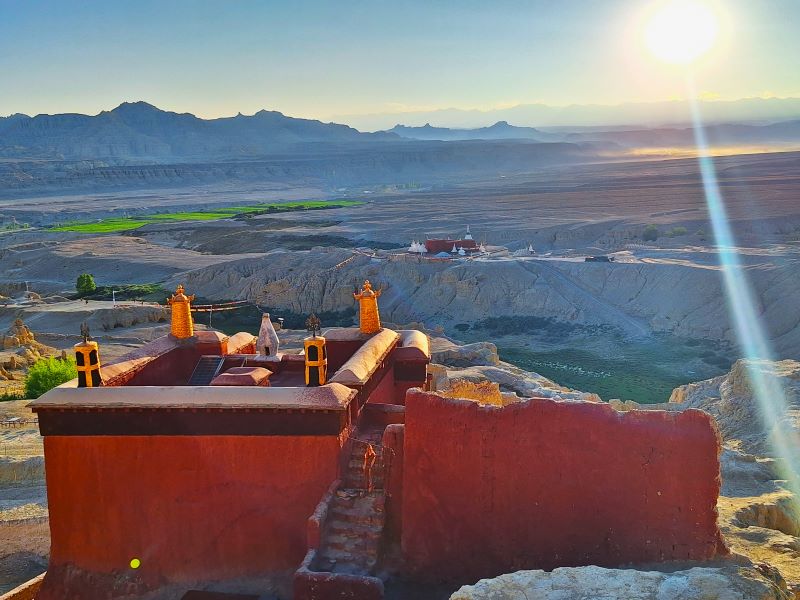
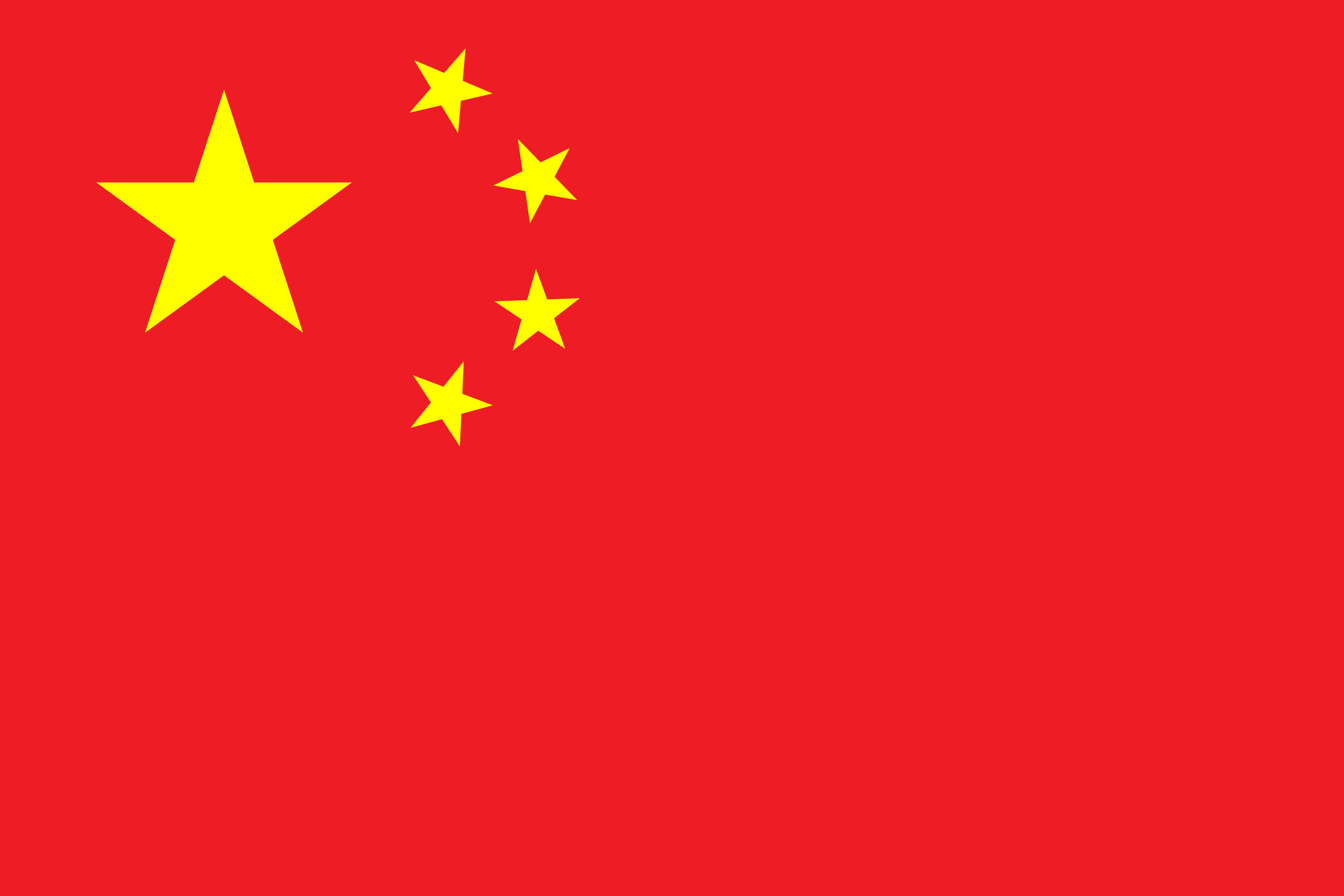 Tibet
Tibet 





































